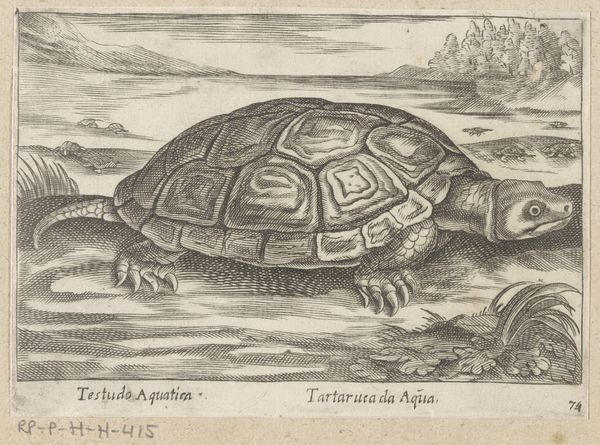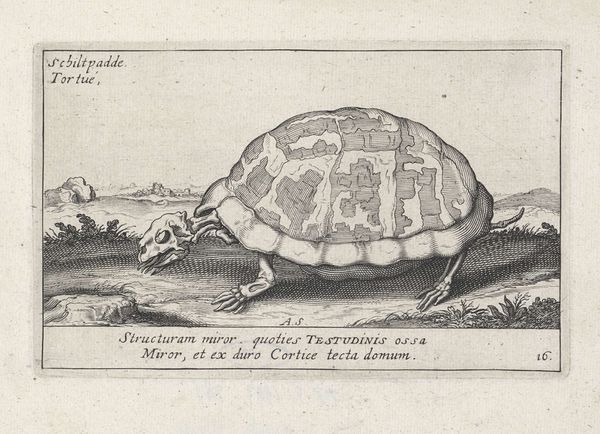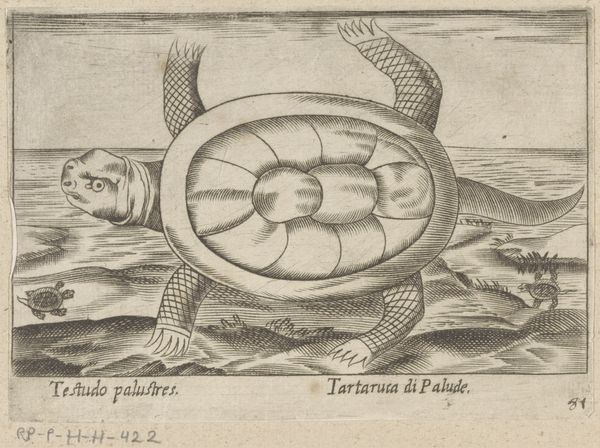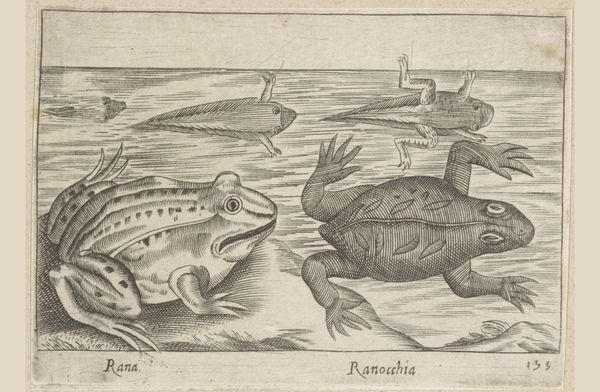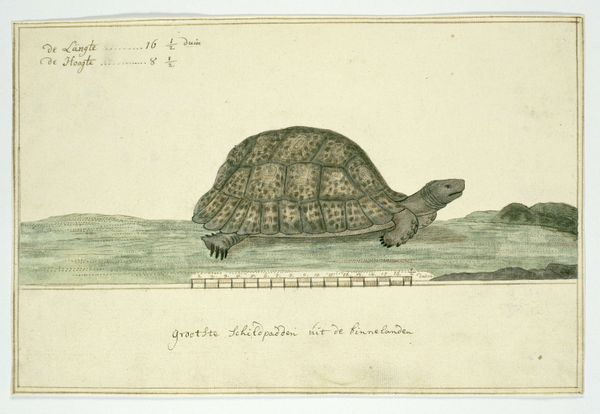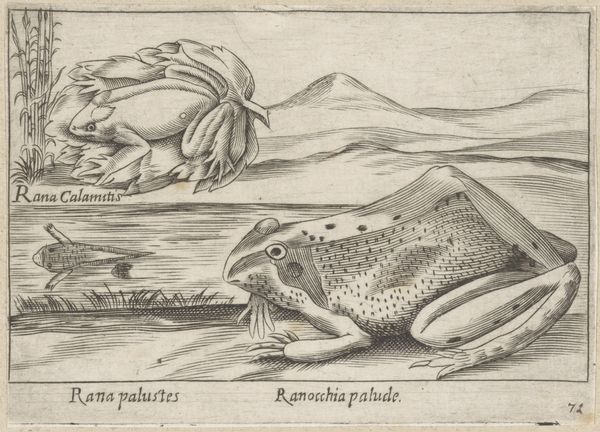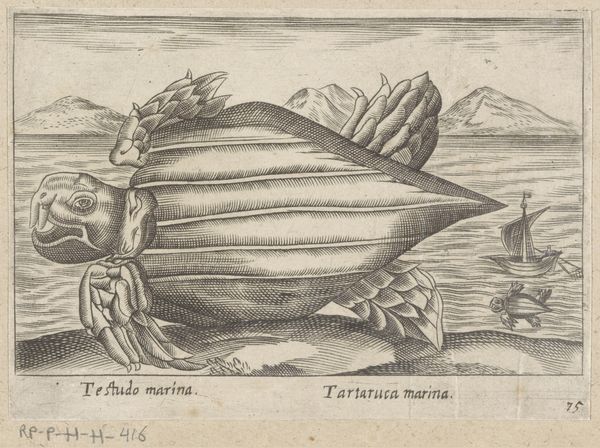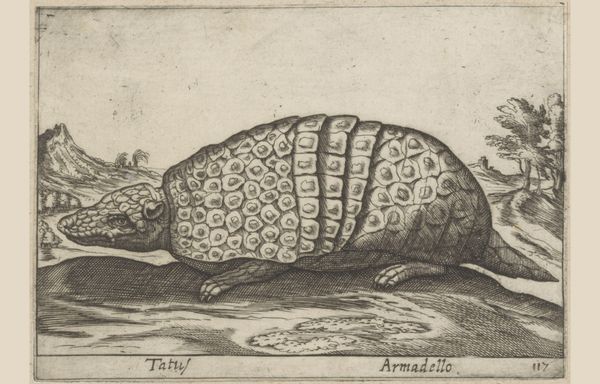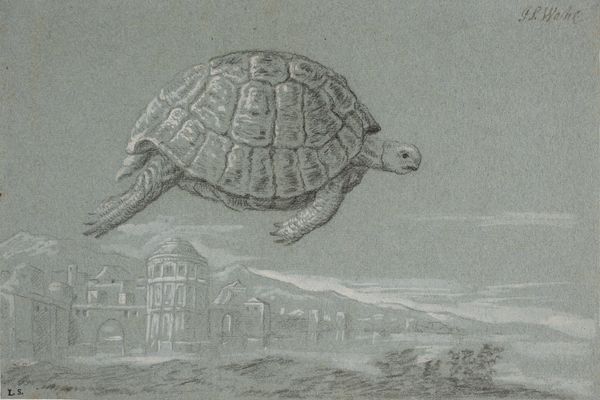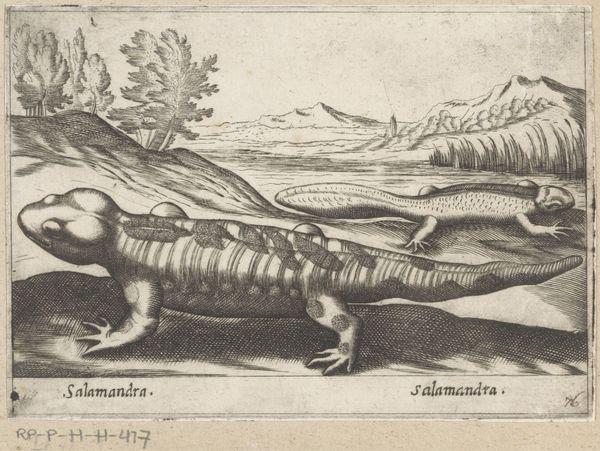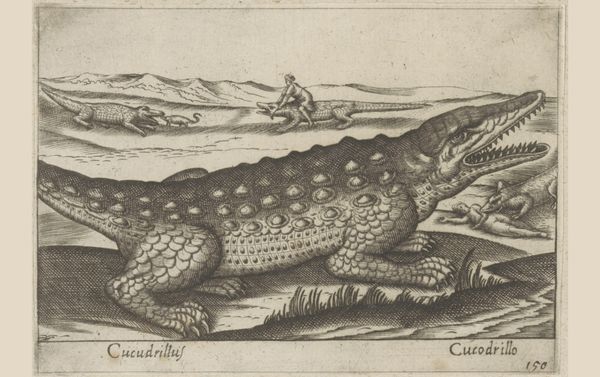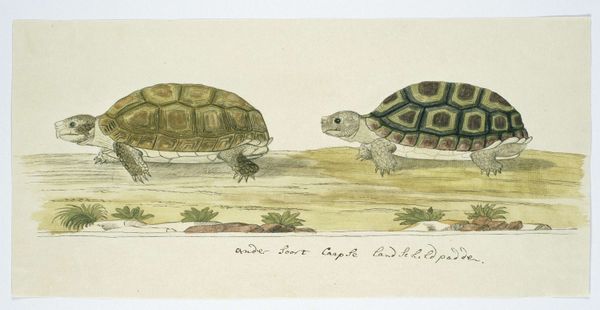
print, engraving
#
baroque
#
animal
# print
#
old engraving style
#
landscape
#
figuration
#
engraving
Dimensions: height 95 mm, width 137 mm
Copyright: Rijks Museum: Open Domain
This is Landschildpad, or Land Turtle, an engraving made by Antonio Tempesta around the turn of the 17th century. He used a metal plate, cutting lines into its surface to hold ink, before pressing it onto paper. Look closely, and you can see how Tempesta meticulously rendered the turtle’s shell. The patternation is achieved with countless tiny cuts, varying in depth to create subtle tonal shifts. The process demanded precision and control. Engraving was a skilled practice, aligning artistic vision with technical expertise. It was also a means of mass production, as multiple impressions could be made from a single plate. Consider the implications of this. Here, we have a depiction of nature, mediated by human labor, and distributed for consumption. Tempesta’s turtle becomes a commodity, caught between art, science, and trade. By appreciating the labor-intensive nature of printmaking, we move beyond mere representation, and begin to understand the turtle as a product of its time.
Comments
No comments
Be the first to comment and join the conversation on the ultimate creative platform.
